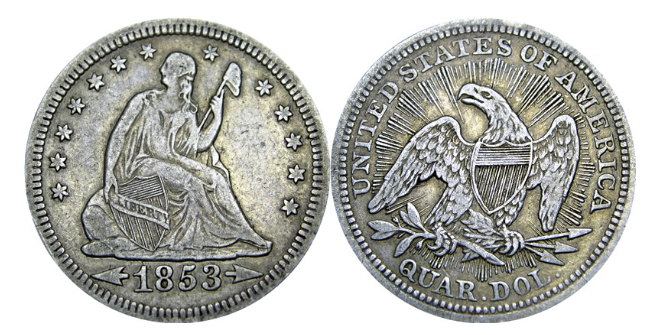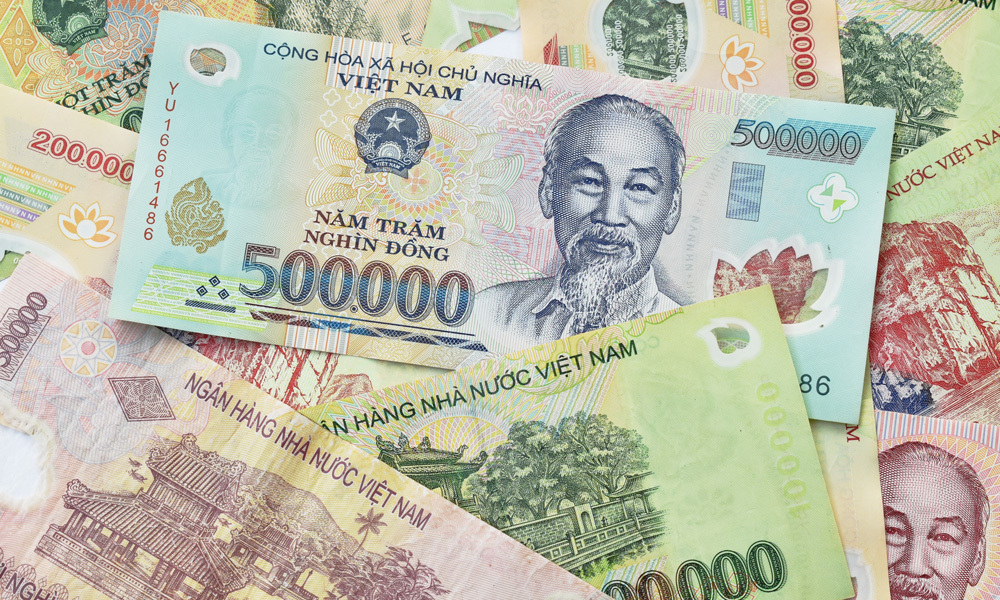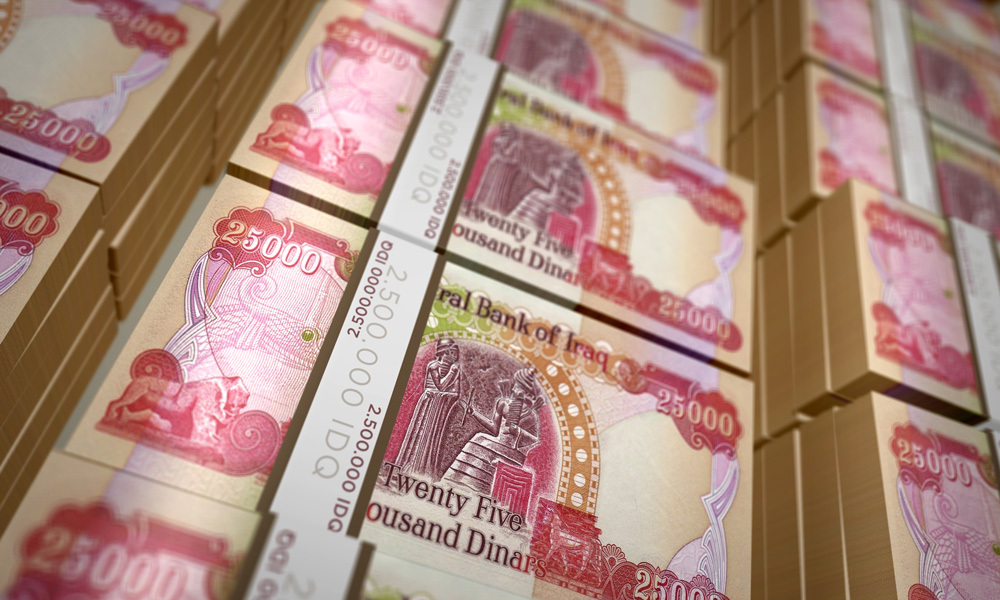By 1837 the Capped Bust design on US quarters and other denominations was looking dated. Mint engraver Christian Gobrecht was commissioned to produce a new design, consistent with the Liberty theme mandated by Congress.
His depiction of Liberty seated on a boulder, her right hand supporting a shield that rests on the rock and holding a staff with Phrygian cap in her left made its debut on quarters in 1838. With six minor variations it would remain the quarter’s obverse (face) design for the next 53 years. Liberty is surrounded by thirteen stars with the coin’s date below.
The reverse has a heraldic eagle holding arrows and an olive branch, similar to the earlier Capped Bust quarters, but the denomination is expressed as “QUAR DOL” instead of 25 C.
Varieties of Liberty Seated Quarters
As might be expected with a coin that had such a long life, the Liberty Seated quarter underwent several modifications. These fall into six basic types.
Type 1 -No Drapery1838-1840
Type 2 – No Motto 1840-1865
Type 3 – Arrows & Rays 1853
Type 4 – No Motto, Arrows 1854-1855
Type 5 – With Motto 1866-1891
Type 6 – Motto with Arrows 1873-1874
Initially, the drape on Liberty’s left arm ended at her elbow. Starting in 1840, the coins showed the drape extending behind her elbow. In 1866, the motto “In God We Trust” was added to quarters, half dollars, and dollar coins.
The weight of quarters and other silver coins was reduced in 1853. To alert users to the change, arrowheads were placed on either side of the date on the obverse and rays radiated behind the eagle on the reverse of 1853 quarters. The rays were removed on 1854 and 1855 coins, but the arrows remained.
The arrows were removed in 1866 but reappeared briefly on some coins in 1873 and 1874 when the coin’s weight was raised slightly to conform to new standards.
Liberty Seated quarters were produced at four mints—Philadelphia, San Francisco, New Orleans, and Carson City. Proof coins were made beginning in 1858.
Rarity and Value of Liberty Seated Quarters
Millions of Liberty Seated quarters were minted over its 53-year run, but even lower quality specimens are becoming scarce due to age. Lower-graded coins are still available for under $100 but prices escalate rapidly as quality increases.
The rarest issues include the New Orleans issues of 1849, 1851 and 1852, the San Francisco coins of 1859, 1860 and 1864, and the 1853 without arrows, all low mintage years. High quality coins of these mintages can bring tens of thousands of dollars at auction, and some of the rarest reach well into six figures.
Details of types, rarity, and pricing for Capped Bust quarters can be found on the PCGS Coin Facts website.



